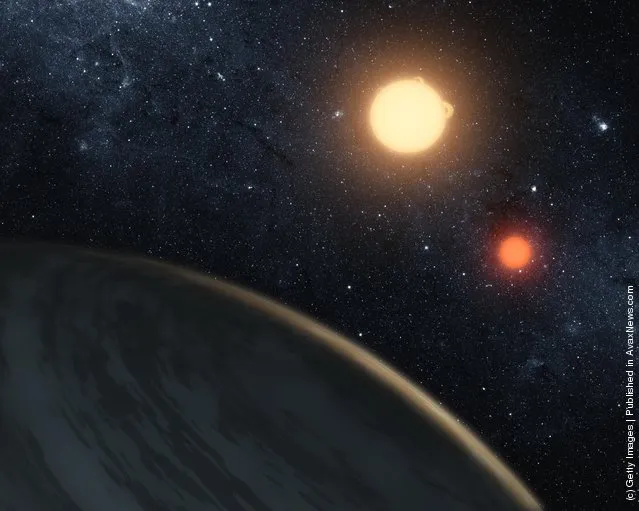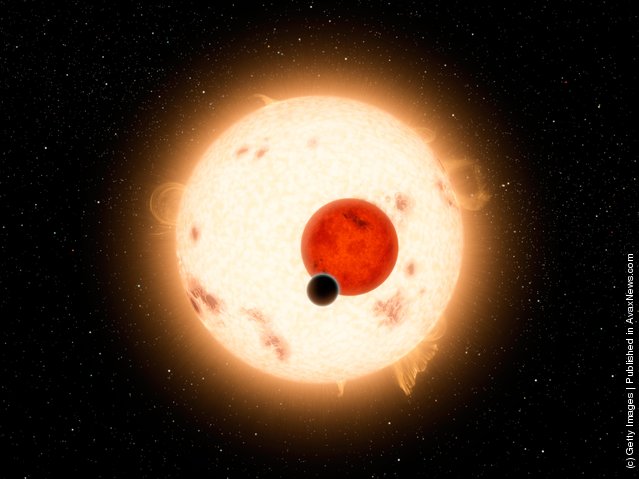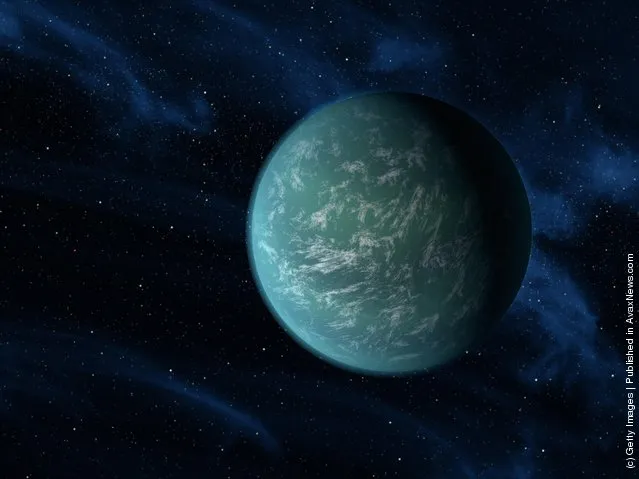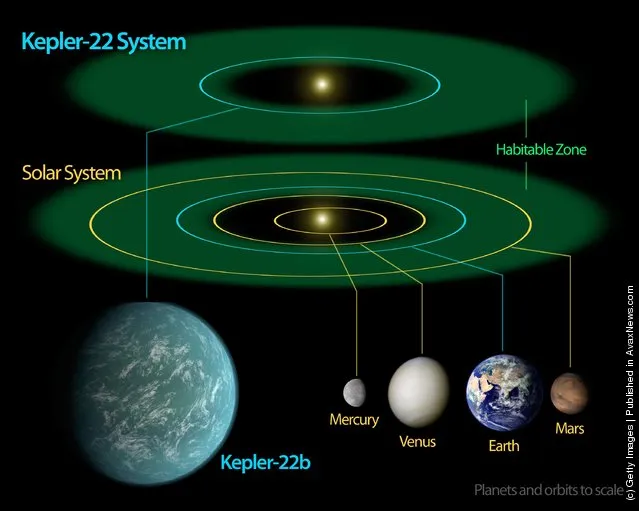

The newly-discovered gaseous planet Kepler-16b orbits it's two stars. NASA's Kepler Mission discoverd the world orbiting two Stars, the larger a K dwarf and the smaller a red dwarf. (Photo by NASA/JPL-Caltech/T. Pyle via Getty Images)

The Kepler-22b, a planet known to comfortably circle in the habitable zone of a sun-like star is digitally illustrated. For the first time NASA's Kepler mission has confirmed a planet to orbit in a star's habitable zone; the region around a star, where liquid water, a requirement for life on Earth, could persist. The planet is 2.4 times the size of Earth, making it the smallest yet found to orbit in the middle of the habit. Clouds could exist in this earth's atmosphere, as the artist's interpretive illustration depicts. (Photo Illustration by Ames/JPL-Caltech/NASA via Getty Images)

A diagram compares our own solar system to Kepler-22, a star system containing the first “habitable zone” planet discovered by NASA's Kepler mission. The habitable zone is the sweet spot around a star where temperatures are right for water to exist in its liquid form. Liquid water is essential for life on Earth. The diagram displays an artist's rendering of the planet comfortably orbiting within the habitable zone, similar to where Earth circles the sun. Kepler-22b has a yearly orbit of 289 days. The planet is the smallest known to orbit in the middle of the habitable zone of a sun-like star and is about 2.4 times the size of Earth. (Photo Illustration by Ames/JPL-Caltech/NASA via Getty Images)
07 Dec 2011 12:28:00,
post received
0 comments
